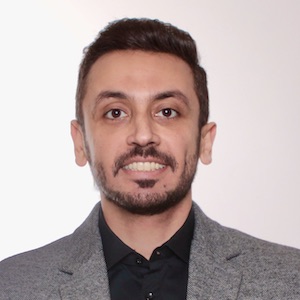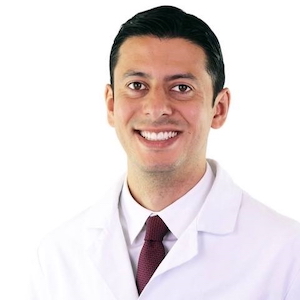
Abdullah Tikreeti

Julian Conejo

Markus B. Blatz

Vincent Mayher
 Abdullah Tikreeti |  Julian Conejo |  Markus B. Blatz |  Vincent Mayher |
Tikreeti, Abdullah, Conejo, Julian, Blatz, Markus B., Mayher, Vincent
University of Pennsylvania School of Dental Medicine, Department of Preventative and Restorative Sciences
There is a wide variety of materials and techniques to restore a non-carious cervical lesions. This presentation describes the integration of chairside CAD/CAM workflow with the lab processed ceramic press system for restoring a non-carious cervical lesions of #1 to #6 with a new zirconia reinforced lithium disilicate veneers.
MethodsA 55-year-old female presented to the clinic with chief complain “I need veneers.” Clinical evaluation reveals non-carious cervical lesions on the facial surface of #6 to #11. After a detailed diagnosis, the lesions identified as erosion lesions on facial surface of #8 & #9 and abfraction lesions on facial surface of #6, #7, #10 & #11. A diagnostic (Pre-Op) scan done with an intraoral scanner (CEREC Omnicam, DentsplySirona). A digital wax up generated in Inlab 20 (DentsplySirona) software, then 3D printed and a silicon stent fabricated with PVS impression material (DentsplySirona) and lined with light body PVS (DentsplySirona). Utilizing the Silicon stent a mockup made inside patient mouth with (Integrity Temporary C&B Material, DentsplySirona) shade A2, and evaluated the anatomical shape, esthetic and phonetics, and obtained the patient approval for the prospected final shape and shade of the veneers, then scanned as a bio-copy scan with Omnicam. A minimal veneers preparation done of #6 to #11 using (Dr. Blatz/Dr. Conejo preparation system for CAD/CAM restorations, Brasseler) and then due to a thin biotype gingiva only a 000 Ultrapak retraction cord (Ultradent) soaked in Hemodent hemostatic solution (Premier) packed carefully with gingival cord packer then a final scan done with Omnicam. Then utilizing the bio-copy scan that we obtained earlier a veneers design done in Inlab software and a CAD-Wax milled using CEREC MC XL (DentsplySirona) and the final scanned model is 3D printed. The CAD-Wax veneers used to manufacture the porcelain veneers using a zirconia reinforced lithium disilicate press ceramic system (Ambria, Vita-zahnfabrik). This material comes in 2 transulcency levels (Translucent/High Translucent). Final veneers tried in with try-in paste (5 glycerine-based PANAVIA™ V5 Try-in Pastes, Kurary Noritaki) shade clear and checked the fit, esthetic and phonetics. Then the cementation process started, first we start with the veneers: 1- etched the veneers using 5% hydrofluoric acid (Panavia V5, Kurary Noritaki) for 30 seconds. 2- another 30 seconds with 35% hydrophosphoric acid (Panavia V5, Kurary Noritaki). 3- Sialine (Panavia V5, Kurary Noritaki) applied and left to dry. Then the tooth steps: 1- Tooth surface etched with 35% hydrophosphoric acid (Panavia V5, Kurary Noritaki) and rinse with water then bolt dry. 2- Applied the Panavia V5 into the internal surface of the veneer and placed on the tooth surface. 3- Excess cement removed and flossed. 4- Light cured the cement from the labial and palatal surfaces. 5- Verified occlusion with articulating paper.
ResultsPatient was extremely satisfied and pleased with the final shape, color and esthetic of the veneers.
ConclusionAlthough there is a wide variety of materials and techniques to restore a non-carious cervical lesions. Porcelain Laminate Veneers are feasible option of restoring the shape, color & esthetic of the anterior teeth that has a non-carious cervical lesions.